In-Situ Testing of Methane Emissions from Landfills Using Laser Absorption Spectroscopy
Abstract
:1. Introduction
2. Methodology
2.1. Principle of TDLAS
2.2. Testing Apparatus
3. Gas Concentration Calibration
4. In Situ Testing at Xiaping Landfill
4.1. Site Description
4.2. Results and Discussions
5. Conclusions
Author Contributions
Funding
Institutional Review Board Statement
Informed Consent Statement
Data Availability Statement
Acknowledgments
Conflicts of Interest
References
- Kaza, S.; Yao, L.; Bhada-Tata, P.; Van Woerden, F. What a Waste 2.0: A Global Snapshot of Solid Waste Management to 2050; World Bank Publications: Herndon, America, 2018. [Google Scholar]
- McDougall, J. A hydro-bio-mechanical model for settlement and other behavior in landfilled waste. Comput. Geotech. 2007, 34, 229–246. [Google Scholar] [CrossRef]
- Huber-Humer, M.; Gebert, J.; Hilger, H. Biotic systems to mitigate landfill methane emissions. Waste Manag. Res. 2008, 26, 33–46. [Google Scholar] [CrossRef]
- Chen, Y.M.; Guo, R.Y.; Li, Y.C.; Liu, H.L.; Zhan, L.T. A degradation model for high kitchen waste content municipal solid waste. Waste Manag. 2016, 58, 376–385. [Google Scholar] [CrossRef]
- Hu, J.; Ke, H.; Lan, J.W.; Chen, Y.M.; Meng, M. A dual-porosity model for coupled leachate and gas flow to vertical wells in municipal solid waste landfills. Géotechnique 2020, 70, 406–420. [Google Scholar] [CrossRef]
- Barlaz, M.A.; Ham, R.K.; Schaefer, D.M. Mass balance analysis of anaerobically decomposed refuse. J. Environ. Eng. 1989, 115, 1088–1102. [Google Scholar] [CrossRef]
- Beaven, R.P.; Ivanova, L.K.; Richards, D.J. Setting a challenge to landfill modellers. In Institution of Civil Engineers—Waste and Resources Management; ICE Publishing: London, UK, 2008; Volume 161, pp. 91–98. [Google Scholar]
- Zhan, L.T.; Xu, H.; Chen, Y.M.; Lü, F.; Lan, J.W.; Shao, L.M.; Lin, W.A.; He, P.J. Biochemical, hydrological and mechanical behaviors of high food waste content MSW landfill: Preliminary findings from a large-scale experiment. Waste Manag. 2017, 63, 27–40. [Google Scholar] [CrossRef] [PubMed]
- Fei, X.; Zekkos, D. Coupled experimental assessment of physico-biochemical characteristics of municipal solid waste undergoing enhanced biodegradation. Géotechnique 2018, 68, 1031–1043. [Google Scholar] [CrossRef]
- Shen, S. Monitoring Method and Emission Mechanisms of Landfill Gas in Municipal Solid Waste Landfill. Ph.D. Thesis, Zhejiang University, Zhejiang, China, 2020. [Google Scholar]
- IPCC (Intergovernmental Panel on Climate Change). Technical Summary. In Climate Change 2013: The Physical Science Basis; Contribution of Working Group I to the Fifth Assessment Report of the IPCC: Geneva, Switzerland, 2013. [Google Scholar]
- Townsend, T.G.; Wise, W.R.; Jain, P. One-dimensional gas flow model for horizontal gas collection systems at municipal solid waste landfills. J. Environ. Eng. 2005, 131, 1716–1723. [Google Scholar] [CrossRef]
- Powell, J.T.; Townsend, T.G.; Zimmerman, J.B. Estimates of solid waste disposal rates and reduction targets for landfill gas emissions. Nat. Clim. Chang. 2016, 6, 162–165. [Google Scholar] [CrossRef]
- Zhan, T.L.T.; Xu, X.B.; Chen, Y.M.; Ma, X.F.; Lan, J.W. Dependence of gas collection efficiency on leachate level at wet landfills of municipal solid wastes and its improvement methods in China. J. Geotech. Geoenvironmental Eng. 2015, 141. [Google Scholar] [CrossRef]
- Goldsmith, C.; Chanton, J.; Abichou, T.; Swan, N.; Green, R.; Haters, G. Methane emissions from 20 landfills across the United States using vertical radial plume mapping. J. Air Waste Manag. Assoc. 2012, 62, 183–197. [Google Scholar] [CrossRef] [PubMed] [Green Version]
- De la Cruz, F.B.; Green, R.B.; Hater, G.R.; Chanton, J.P.; Thoma, E.D.; Harvey, T.A.; Barlaz, M.A. Comparison of field measurements to methane emissions models at a new landfill. Environ. Sci. Technol. 2016, 50, 9432–9441. [Google Scholar] [CrossRef]
- Levy, P.; Gray, A.; Leeson, S.; Gaiawyn, J.; Kelly, M.; Cooper, M.; Dinsmore, K.; Jones, S.; Sheppard, L. Quantification of uncertainty in trace gas fluxes measured by the static chamber method. Eur. J. Soil Sci. 2011, 62, 811–821. [Google Scholar] [CrossRef]
- Capaccioni, B.; Caramiello, C.; Tatano, F.; Viscione, A. Effects of a temporary HDPE cover on landfill gas emissions: Multiyear evaluation with the static chamber approach at an Italian landfill. Waste Manag. 2011, 31, 956–965. [Google Scholar] [CrossRef]
- Winton, R.S.; Richardson, C.J. A cost-effective method for reducing soil disturbance-induced errors in static chamber measurement of wetland methane emissions. Wetl. Ecol. Manag. 2016, 24, 419–425. [Google Scholar] [CrossRef]
- Haro, K.; Ouarma, I.; Nana, B.; Bere, A.; Tubreoumya, G.C.; Kam, S.Z.; Laville, P.; Loubet, B.; Koulidiat, J. Assessment of CH4 and CO2 surface emissions from Polesgo’s landfill (Ouagadougou, Burkina Faso) based on static chamber method. Adv. Clim. Chang. Res. 2019, 10, 181–191. [Google Scholar] [CrossRef]
- Bian, R.; Xin, D.; Chai, X. Methane emissions from landfill: Influence of vegetation and weather conditions. Environ. Technol. 2019, 40, 2173–2181. [Google Scholar] [CrossRef]
- Zhan, L.T.; Wu, T.; Feng, S.; Lan, J.W.; Chen, Y.M. A simple and rapid in situ method for measuring landfill gas emissions and methane oxidation rates in landfill covers. Waste Manag. Res. 2020, 38, 588–593. [Google Scholar] [CrossRef] [PubMed]
- Gonzalez-Valencia, R.; Magana-Rodriguez, F.; Cristóbal, J.; Thalasso, F. Hotspot detection and spatial distribution of methane emissions from landfills by a surface probe method. Waste Manag. 2016, 55, 299–305. [Google Scholar] [CrossRef]
- Scheutz, C.; Samuelsson, J.; Fredenslund, A.M.; Kjeldsen, P. Quantification of multiple methane emission sources at landfills using a double tracer technique. Waste Manag. 2011, 31, 1009–1017. [Google Scholar] [CrossRef] [PubMed]
- Tanikawa, N.; Furichi, T.; Ishii, K.; Matsuo, K.; Iseki, T. Development of a convenient method for monitoring of methane in ambient air at landfill sites using a portable open path analyzer. In Proceedings of the Third Asia-Pacific Landfill Symposium, Kitakyushu, Japan; 2004. [Google Scholar]
- Shen, S.; Chen, Y.; Zhan, L.; Xie, H.; Bouazza, A.; He, F.; Zuo, X. Methane hotspot localization and visualization at a large-scale Xi’an landfill in China: Effective tool for landfill gas management. J. Environ. Manag. 2018, 225, 232–241. [Google Scholar] [CrossRef] [PubMed]
- Wagner, S.; Fisher, B.T.; Fleming, J.W.; Ebert, V. TDLAS-based in situ measurement of absolute acetylene concentrations in laminar 2D diffusion flames. In Combustion Institute; Elsevier: Amsterdam, The Netherlands, 2009; Volume 32, pp. 839–846. [Google Scholar]
- Rothman, L.S.; Jacquemart, D.; Barbe, A.; Benner, D.C.; Birk, M.; Brown, L.R.; Carleer, M.; Chackerian, C.; Chance, K.; Coudert, L.; et al. The HITRAN 2004 molecular spectroscopic database. J. Quant. Spectrosc. Radiat. Transf. 2005, 96, 139–204. [Google Scholar] [CrossRef] [Green Version]
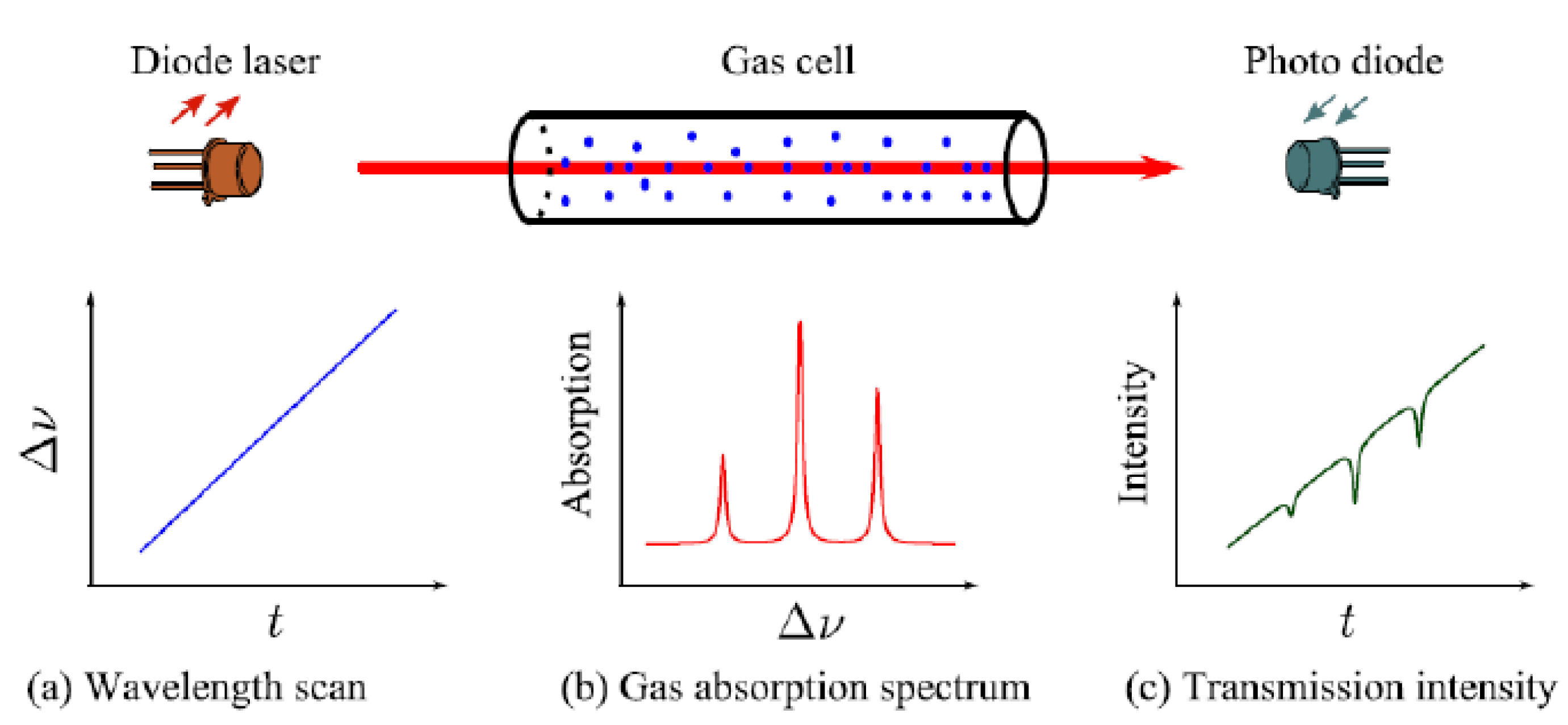
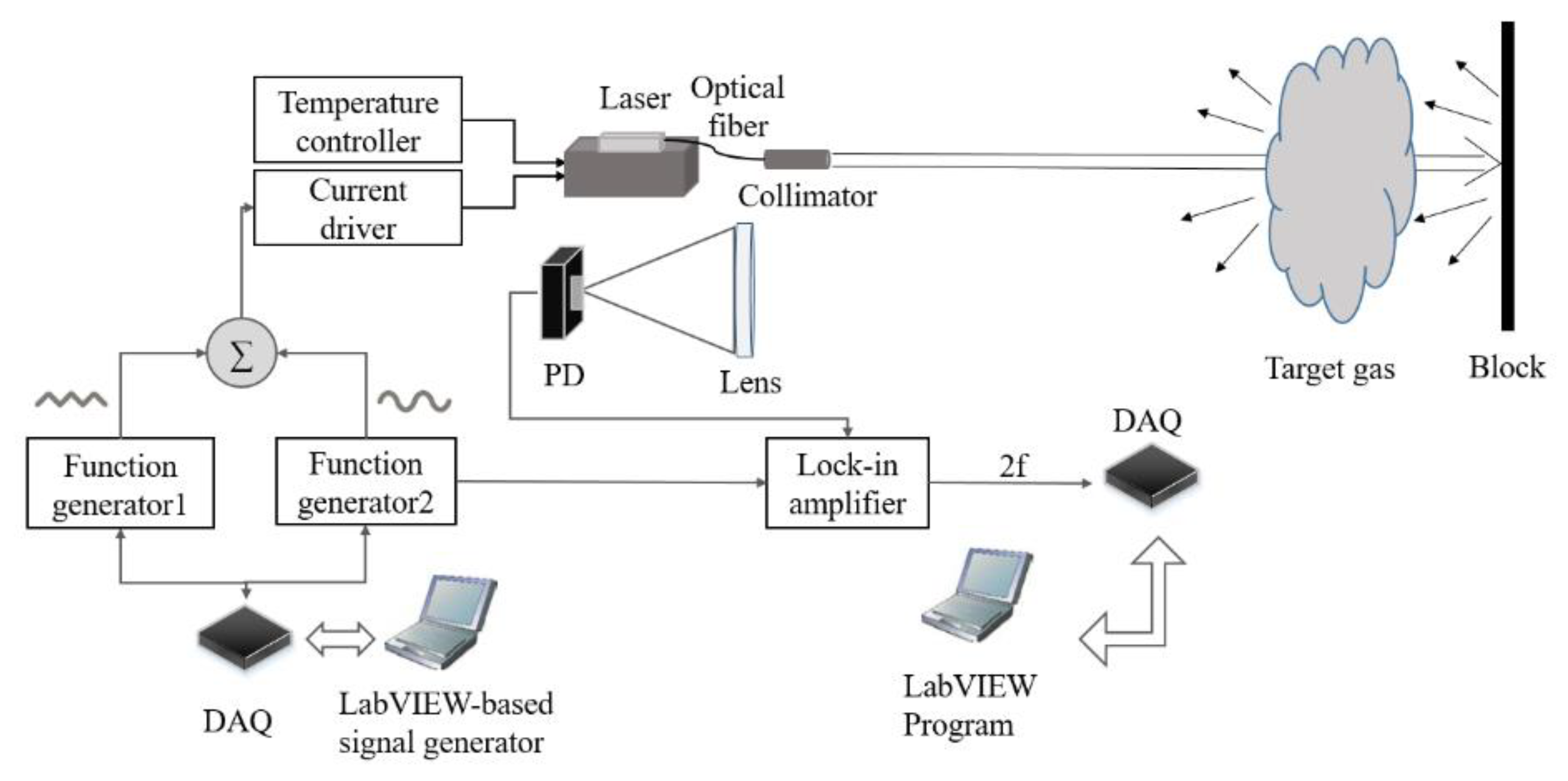

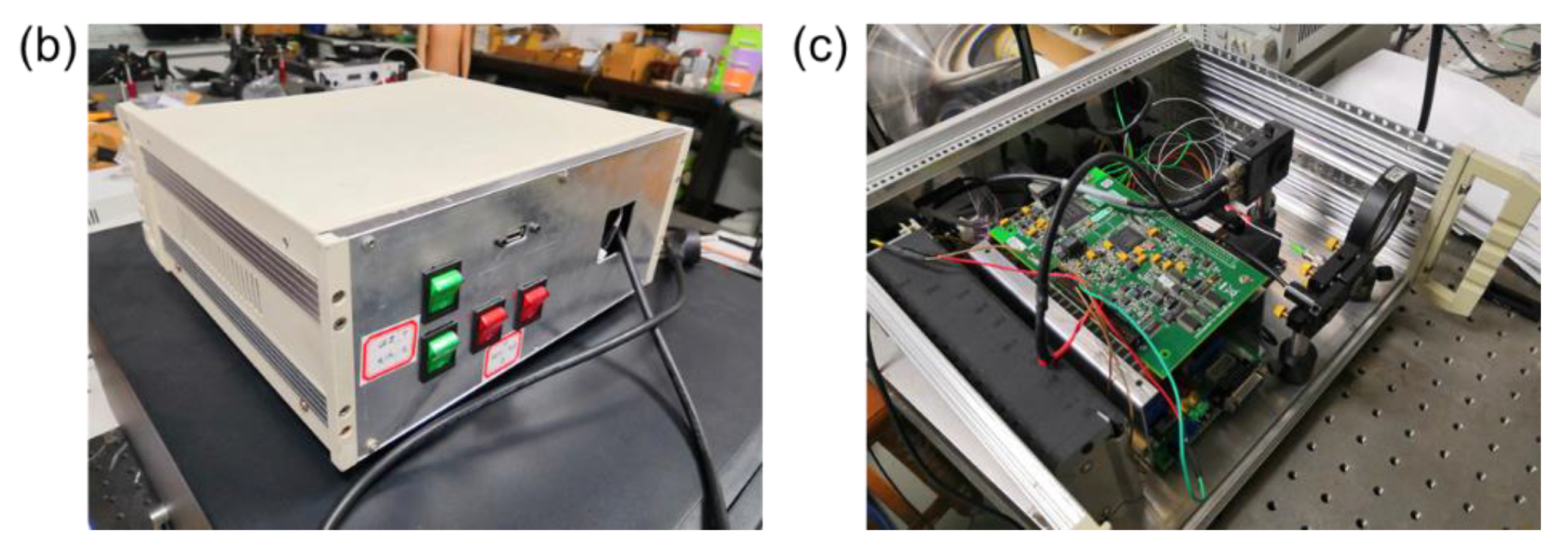
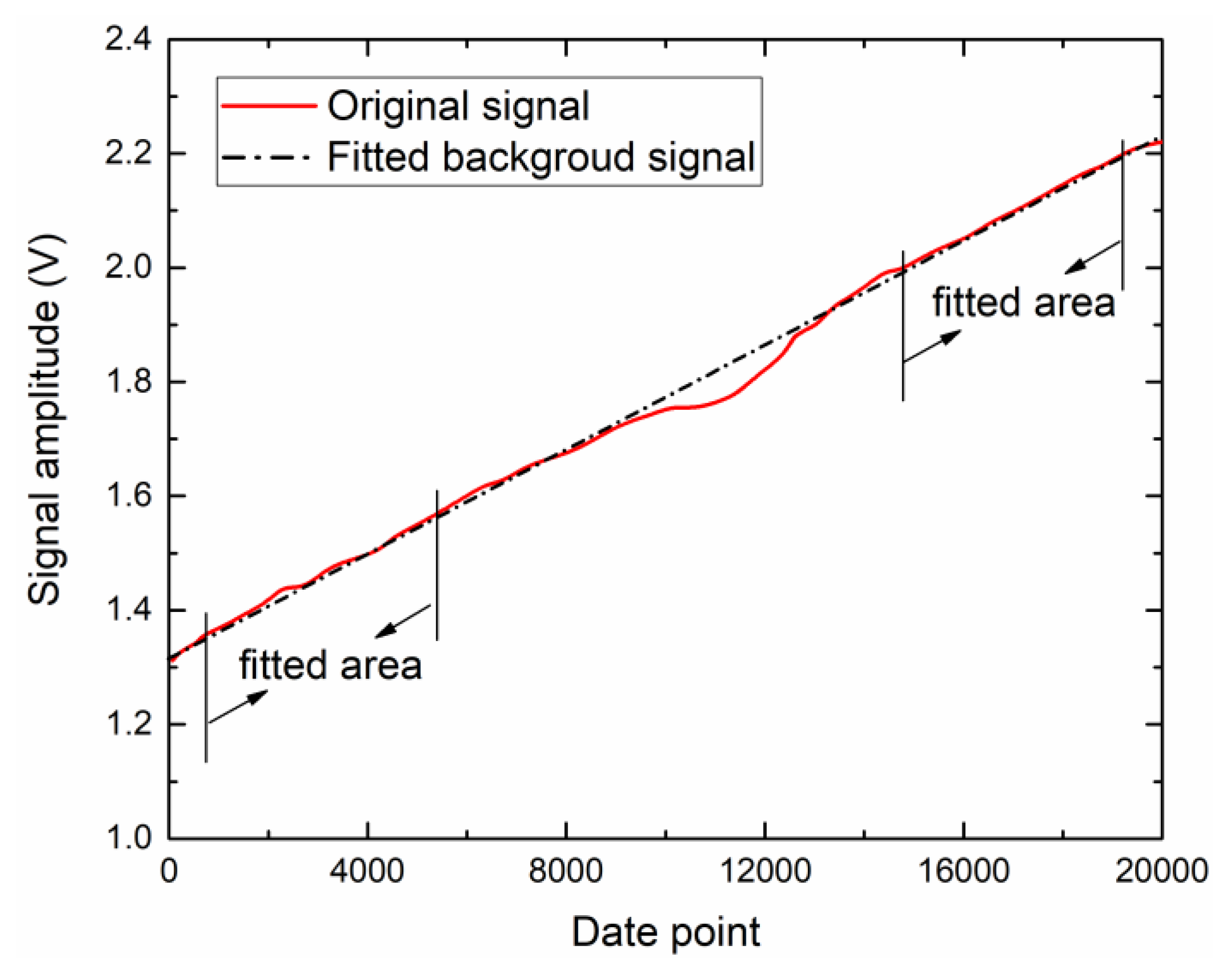
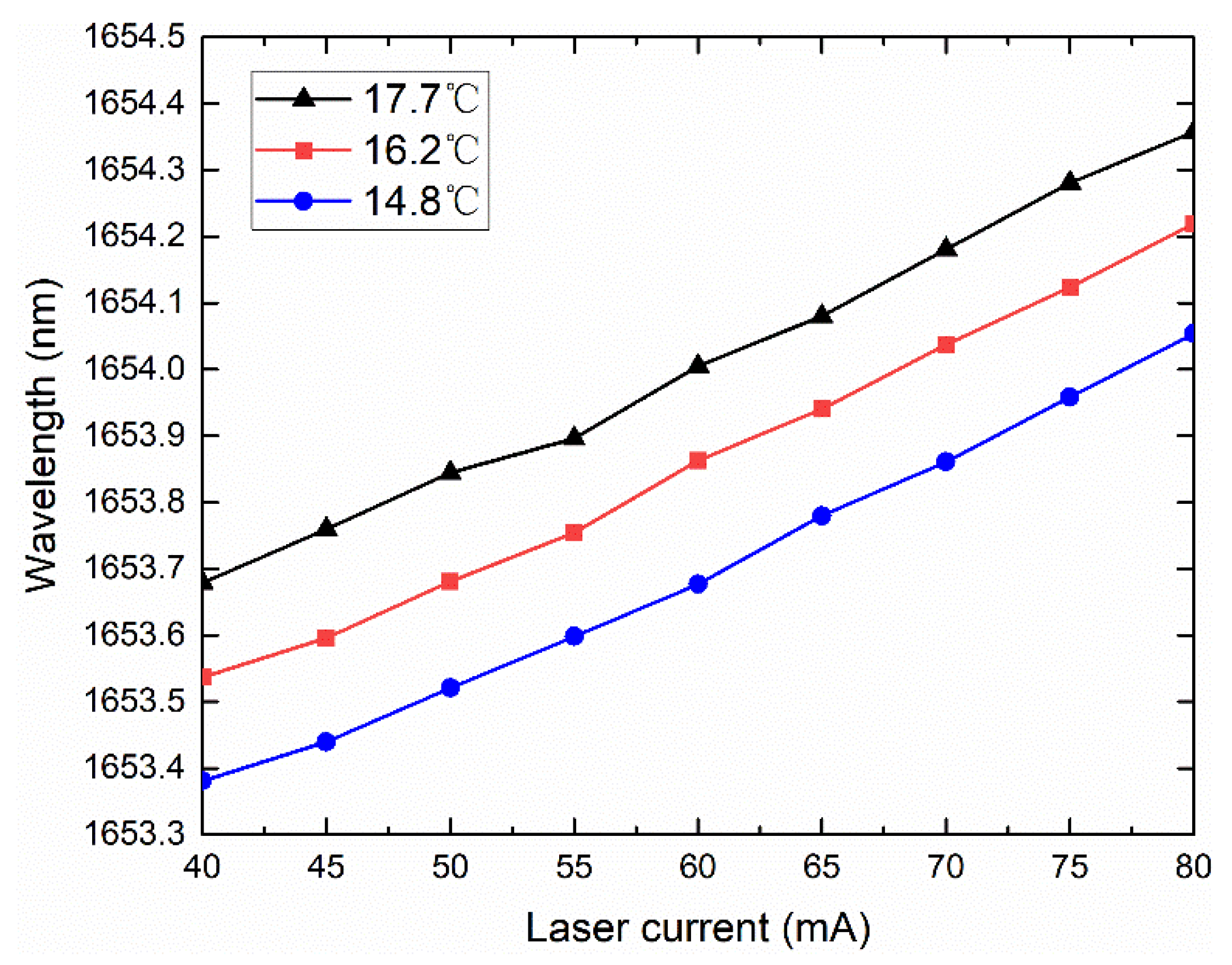

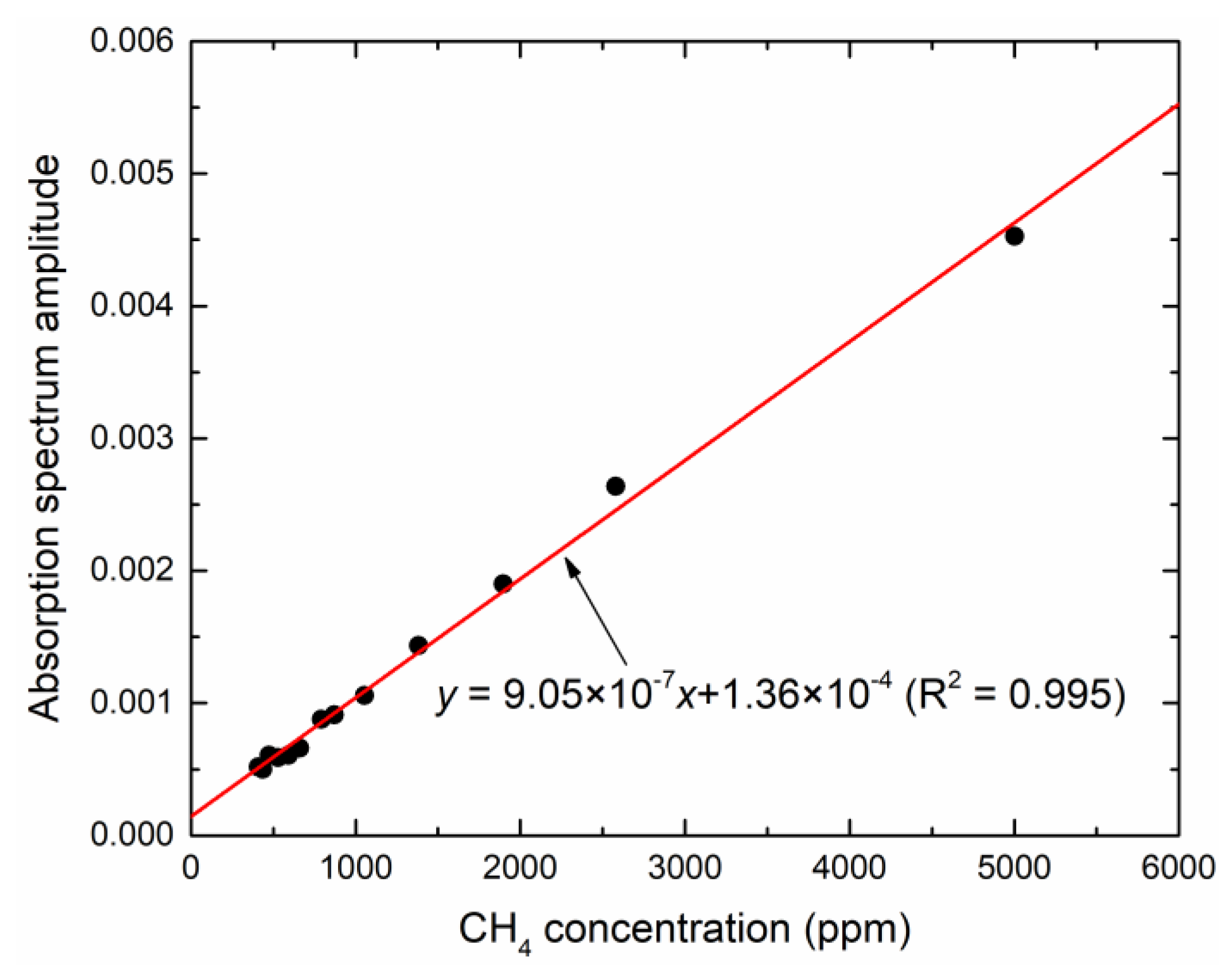
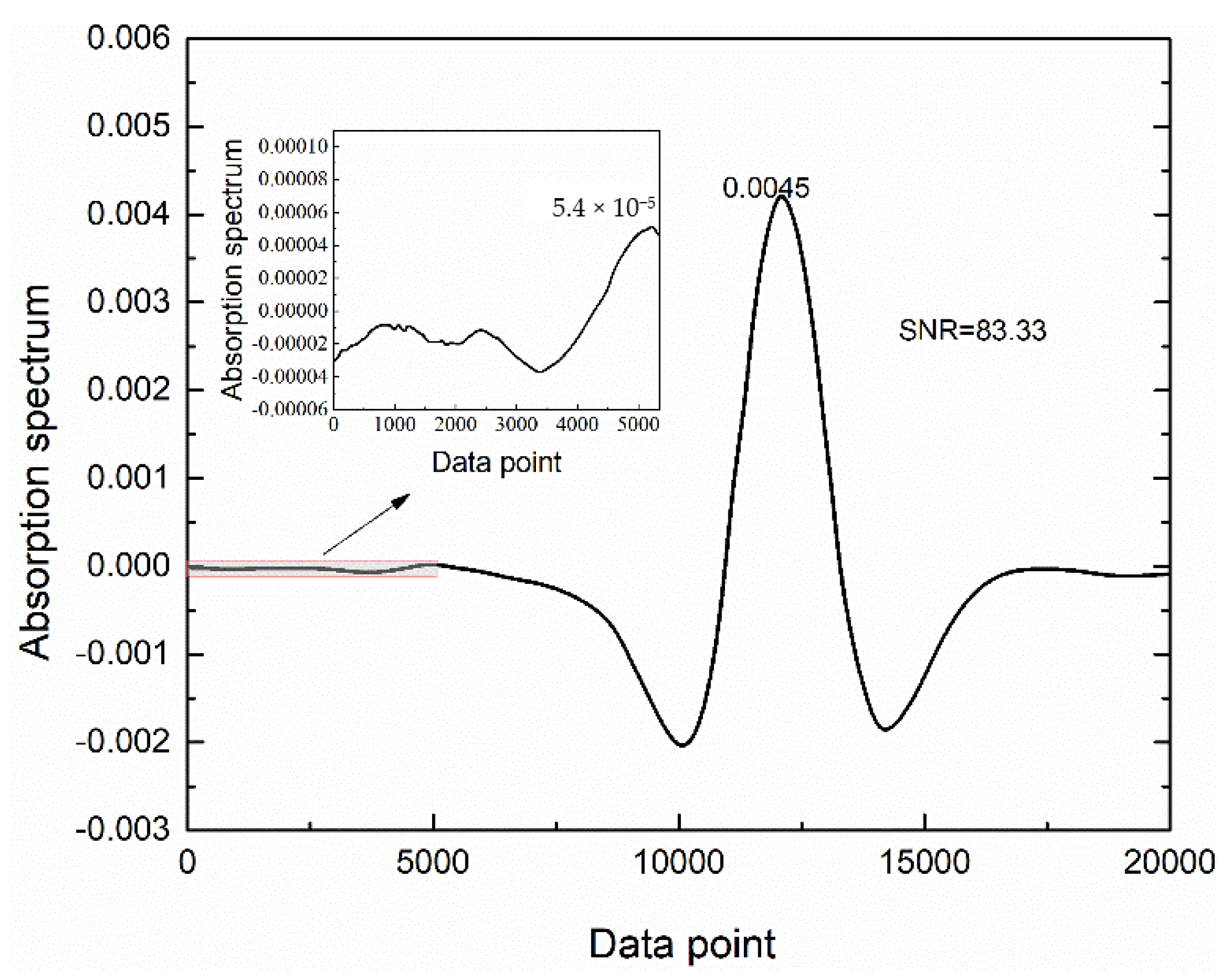
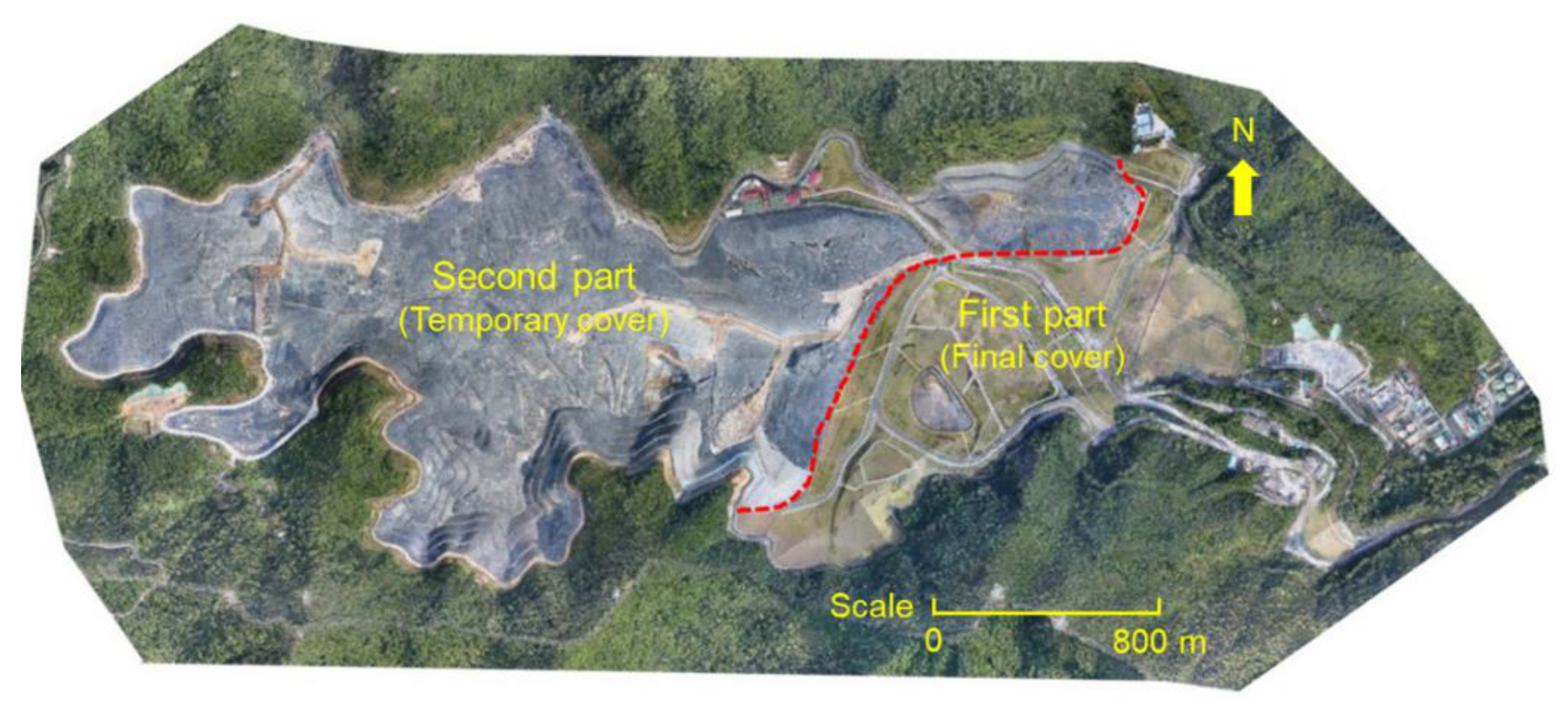
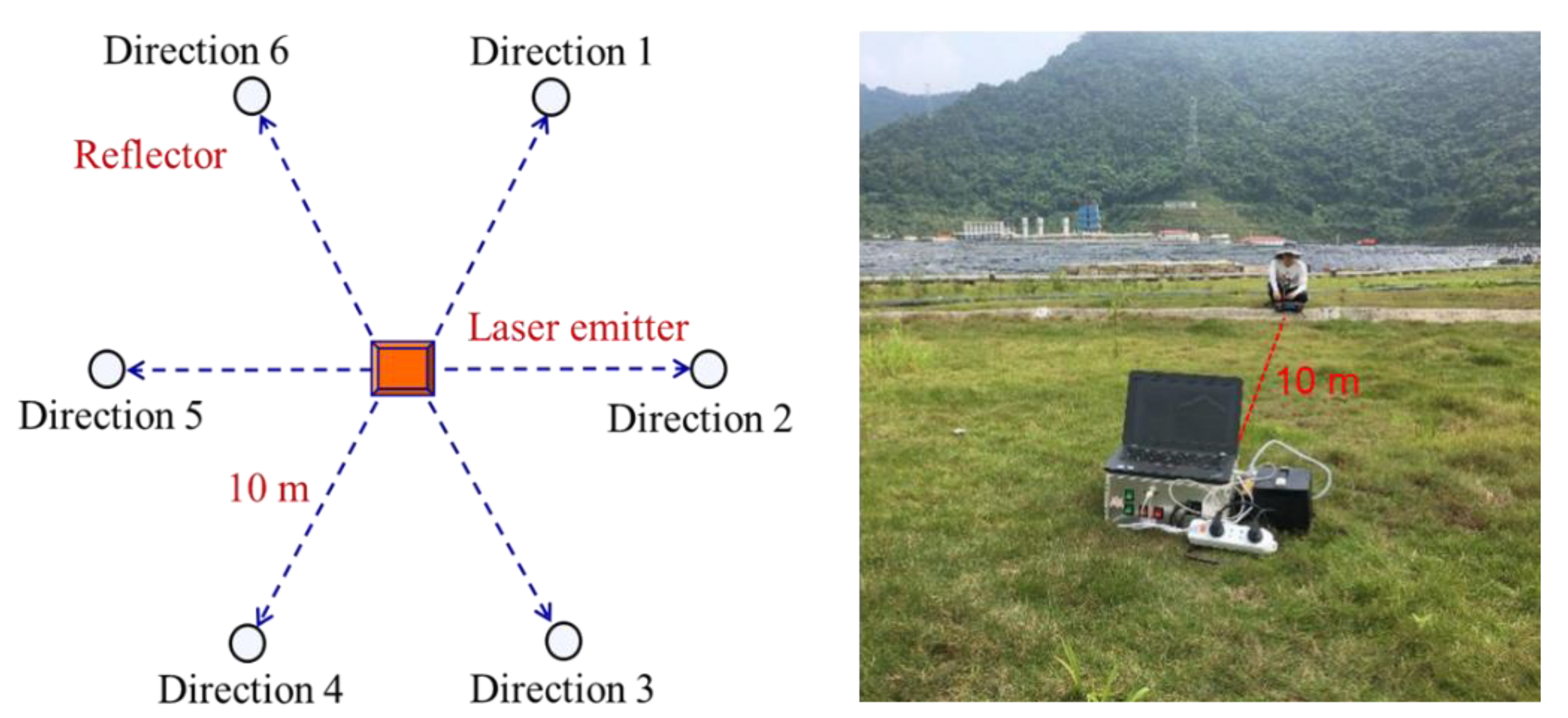
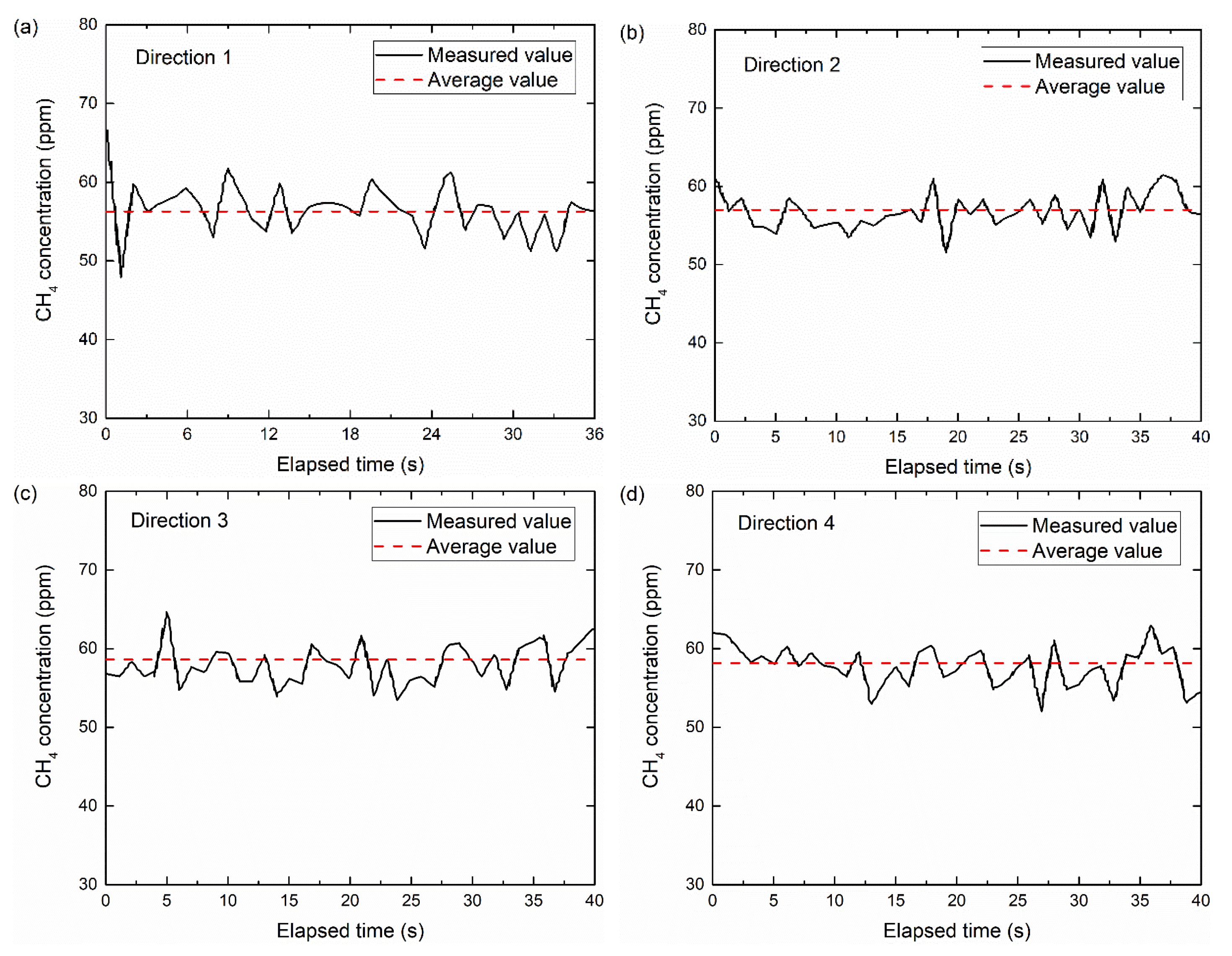

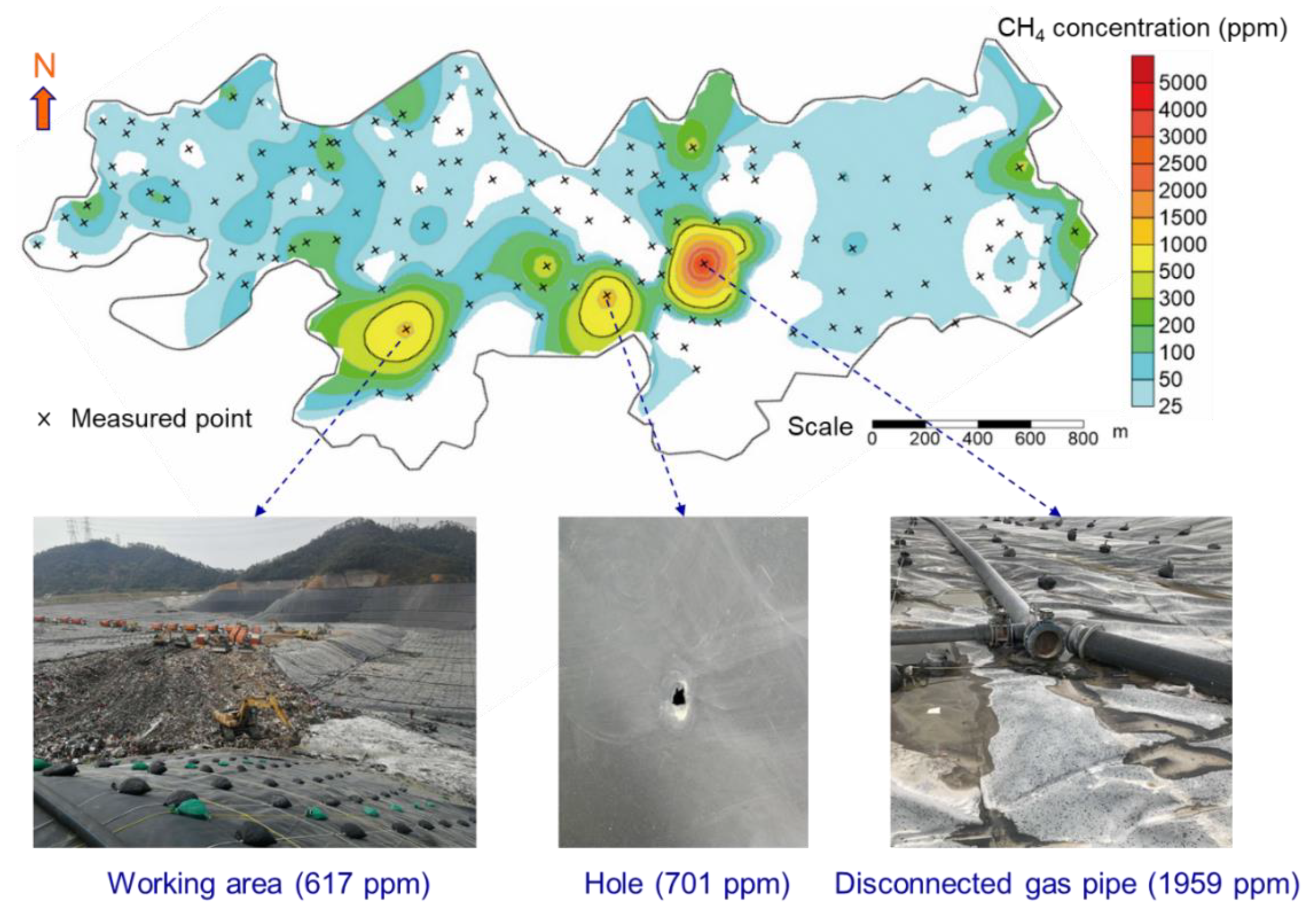
Publisher’s Note: MDPI stays neutral with regard to jurisdictional claims in published maps and institutional affiliations. |
© 2021 by the authors. Licensee MDPI, Basel, Switzerland. This article is an open access article distributed under the terms and conditions of the Creative Commons Attribution (CC BY) license (http://creativecommons.org/licenses/by/4.0/).
Share and Cite
He, H.; Gao, S.; Hu, J.; Zhang, T.; Wu, T.; Qiu, Z.; Zhang, C.; Sun, Y.; He, S. In-Situ Testing of Methane Emissions from Landfills Using Laser Absorption Spectroscopy. Appl. Sci. 2021, 11, 2117. https://doi.org/10.3390/app11052117
He H, Gao S, Hu J, Zhang T, Wu T, Qiu Z, Zhang C, Sun Y, He S. In-Situ Testing of Methane Emissions from Landfills Using Laser Absorption Spectroscopy. Applied Sciences. 2021; 11(5):2117. https://doi.org/10.3390/app11052117
Chicago/Turabian StyleHe, Haijie, Shiyi Gao, Jie Hu, Tie Zhang, Tao Wu, Zhanhong Qiu, Chensheng Zhang, Yaoran Sun, and Sailing He. 2021. "In-Situ Testing of Methane Emissions from Landfills Using Laser Absorption Spectroscopy" Applied Sciences 11, no. 5: 2117. https://doi.org/10.3390/app11052117








